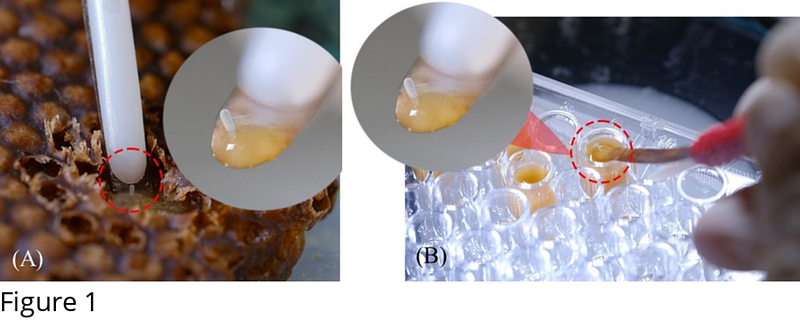External morphometric and microscopic analysis of the reproductive system in in- vitro reared stingless bee queens, Heterotrigona itama, and their mating frequency

External morphometric and microscopic analysis of the reproductive system in in- vitro reared stingless bee queens, Heterotrigona itama, and their mating frequency
Wongsa, K.; Duangphakdee, O.; Poolprasert, P.; RATTANAWANNEE, A.
AbstractStingless bees, prevalent in tropical and subtropical regions, are a tribe of eusocial bees that are crucial pollinators for economic crops and native plants, producing honey and pollen. However, colony expansion is limited by a shortage of queens for new colonies. Therefore, mass artificial rearing of virgin queens could address this in commercially managed meliponiculture. Furthermore, the in vitro rearing of queen stingless bees can improve meliponiculture management and conservation efforts. Herein, we explored the efficacy of in vitro queen rearing for Heterotrigona itama assessing the queens body size, reproductive organ size (ovary and spermatheca), acceptance rate into new, small colonies, and mating frequency. H. itama larvae developed into queens when fed with 120 {micro}L-150 {micro}L of larval food, resulting in in vitro queens having body sizes similar to those of naturally produced queens. Microscopic analysis revealed well-developed ovaries and spermathecae in in vitro-reared queens, unlike the smaller ovaries and the absence of spermathecae in the naturally produced workers. Acceptance of in vitro-reared queens was independent of worker age, and mating frequency was low but not significantly different from naturally produced queens. These findings could enhance stingless beekeeping practices and conservation efforts for the native stingless bee species.


